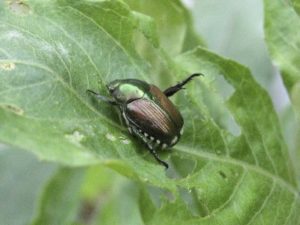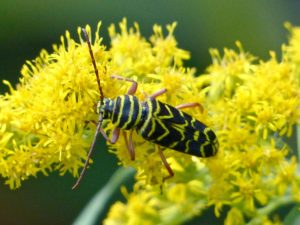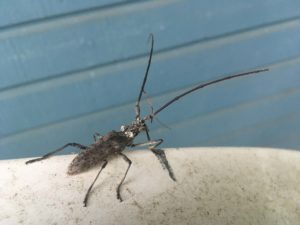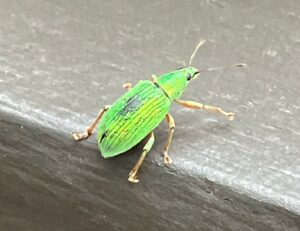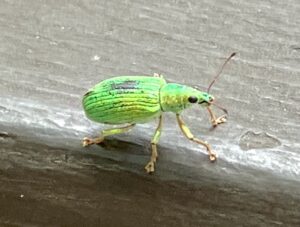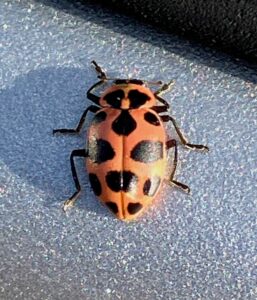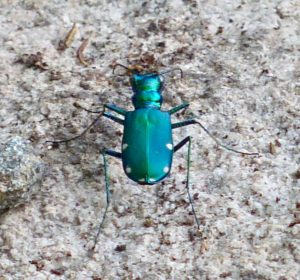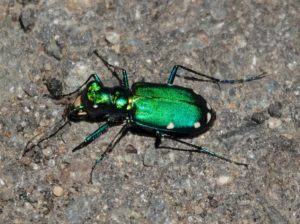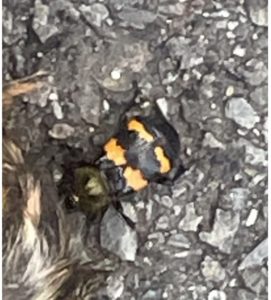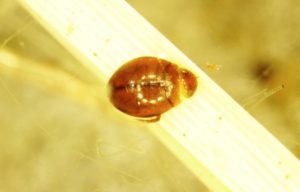Sightings – Beetles
Observer: Paul Lauenstein
Observation Date: 6/4/24
Observation Time: 12:40 p.m.
Observation Location: Moose Hill Farm (T.T.O.R.)
Common Name: American Carrion Beetle
Scientific Name: Necrophilia americana
Comments: From spring through fall, during daylight, a few hours after flies begin arriving at a carcass, the adult beetles will arrive as well. They immediately begin eating the already hatching fly larvae, mating, and laying their own eggs. As long as the carcass lasts, the adults will remain eating competitors to give their own larvae a chance to eat and grow. Upon hatching from the eggs, the larvae will eat both the carcass and other larvae that are within it. Eventually the larvae will fall to the ground, dig into the dirt, and pupate. Overwintering is done by adults.
More Information: Wikipedia
Observer: Paul Lauenstein
Observation Date: 8/6/15
Observation Time: 12:50 p.m.
Observation Location: Gavins Pond area
Common Name: American Carrion Beetle
Scientific Name: Necrophilia americana
Comments: From spring through fall, during daylight, a few hours after flies begin arriving at a carcass, the adult beetles will arrive as well. They immediately begin eating the already hatching fly larvae, mating, and laying their own eggs. As long as the carcass lasts, the adults will remain eating competitors to give their own larvae a chance to eat and grow. Upon hatching from the eggs, the larvae will eat both the carcass and other larvae that are within it. Eventually the larvae will fall to the ground, dig into the dirt, and pupate. Overwintering is done by adults.
More Information: Wikipedia
Observer: Paul Lauenstein
Observation Date: 8/6/11
Observation Time: 8:10 a.m.
Observation Location: 4 Gavins Pond Road (back yard)
Common Name: Banded Net-Winged Beetle
Scientific Name: Calopteron discrepans
Comments: This colorful beetle is found throughout the eastern U.S. Its bright color and contrast warn predators that they taste bad if eaten.
More Information: University of Florida
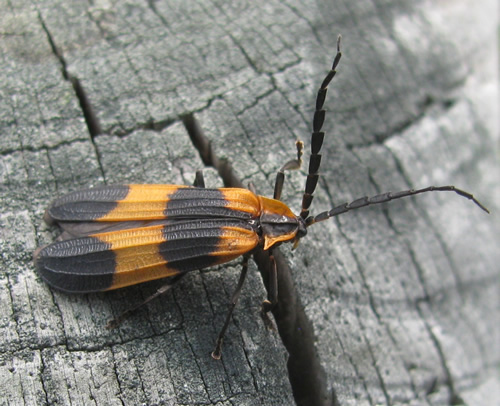
Observer: Paul Lauenstein
Observation Date: 4/3/14
Observation Time: 2:45 p.m.
Observation Location: Gavins Pond area
Common Name: Blister Beetle
Scientific Name: Tricrania sanguinipennis
Comments: Blister beetles receive their common name from the ability of their hemolymph to produce blistering on contact with human skin. Hemolymph is often exuded copiously by reflexive bleeding when an adult beetle is pressed or rubbed. Blisters commonly occur on the neck and arms, as the result of exposure to adult beetles attracted to outdoor lights at night.
The blistering agent is cantharidin, an odorless terpene (exo-1,2-cis-dimethyl-3,6-ep- oxyhexahydro-phthalic anhydride) occurring elsewhere only in beetles of the family Oedemeridae (Arnett 2008). Cantharidin or cantharides (dried, pulverized bodies of adult beetles) was once employed extensively in human and veterinary medicine, primarily as a vesicant and irritant and is still used in the U.S. as the active ingredient in a proprietary wart remover (Epstein and Epstein 1960, Kartal Durmazlar et al, 2009). Taken internally or absorbed through the skin, cantharidin is highly toxic to mammals. There is an extensive literature dealing with its reputed aphrodisiacal properties and numerous reports of human poisonings, both accidental and deliberate. Source: http://entnemdept.ufl.edu/creatures/urban/medical/blister_beetles.htm
More Information: PBase

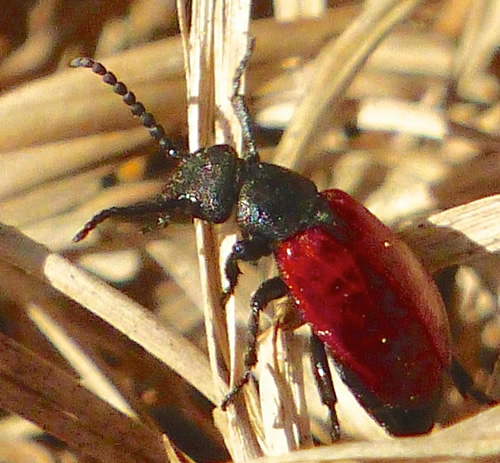
Observer: Paul Lauenstein
Observation Date: 6/1/13
Observation Time: 4:00 p.m.
Observation Location: Ward’s Berry Farm
Common Name: Colorado Potato Beetle
Scientific Name: Leptinotarsa decemlineata
Comments: These striking beetles were eating eggplant leaves. Colorado potato beetles have developed resistance to all known classes of pesticides.
More Information: Organic Garden Info
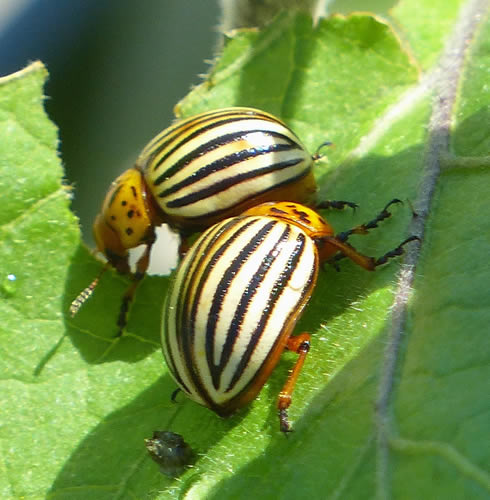
Observer: Paul Lauenstein
Observation Date: 7/12/10
Observation Time: 8:25 a.m.
Observation Location: Gavins Pond Road
Common Name: Dogbane Leaf beetle
Scientific Name: Chrysochus auratus
Comments: The dogbane leaf beetle has a special type of color that shines and changes as the insect changes position or we change position looking at it. This changing color is called iridescence. The beetles’ iridescence is produced by special body structures and light. The surfaces of the body parts of this beetle are made up of stacks of tiny, slanting plates, under which is a pigment (substance that produces color). Some light rays reflect from the surface of the plates, and other light rays reflect from the pigment underneath. At different angles, the light reflects at different speeds, causing interference and resulting in our seeing different colors.
More Information: insectidentification.org
Observer: Paul Lauenstein
Observation Date: 7/13/13
Observation Time: 10:30 a.m.
Observation Location: Soccer parking area by Gavins Pond
Common Name: Fourteen-spotted leaf beetle
Scientific Name: Cryptocephalus guttulatus
Comments: Count the spots and you’ll know how this beetle got its name.
More Information: Insects of West Virginia
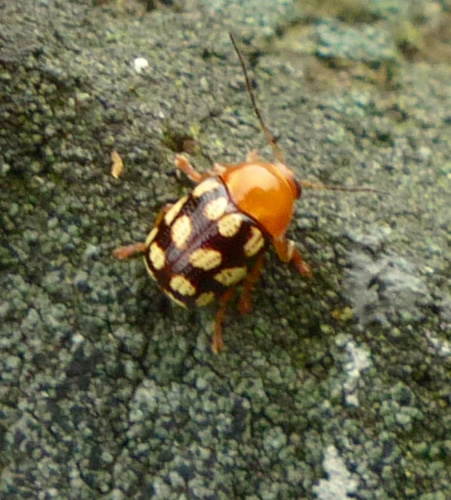
Observer: Paul Lauenstein
Observation Date: 5/17/13
Observation Time: 11:30 a.m.
Observation Location: Gavins Pond Dam
Common Name: Galerucella beetle
Scientific Name: Galerucella calmariensis
Comments: The Neponset River Watershed Association introduced these European beetles in Fowl Meadow in Canton and Norwood to control invasive purple loosestrife. They have spread to Sharon, where they are having the desired effect of keeping the invasive purlple loosestrife in check so native plants can thrive.
In upper left of the photo, you can see beetle eggs.
More Information: Neponset River Watershed Association
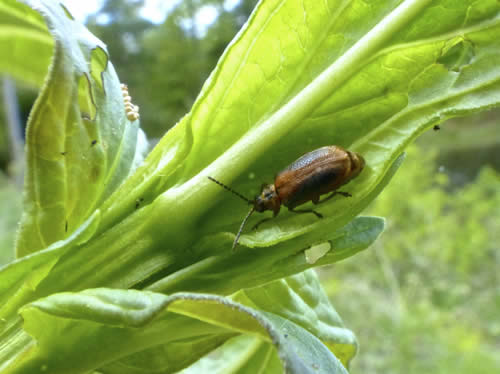
Observer: Paul Lauenstein
Observation Date: 6/17/11
Observation Time: 5:05 p.m.
Observation Location: Gavins Pond Dam
Common Name: Galerucella beetle larvae
Scientific Name: Galerucella calmariensis (or G. pusilla)
Comments: Galerucella beetles eat only purple loosestrife, an invasive exotic weed that has been displacing native wetland plants and reducing biodiversity. The Neponset River Watershed Association has been “ranching” and releasing Galerucella beetles, and they are now showing up in Sharon.
More Information: Neponset River Watershed Association
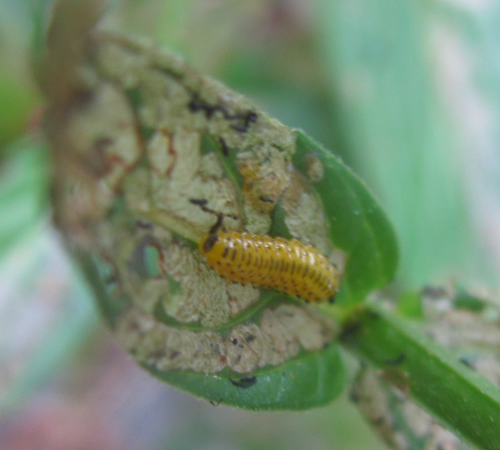
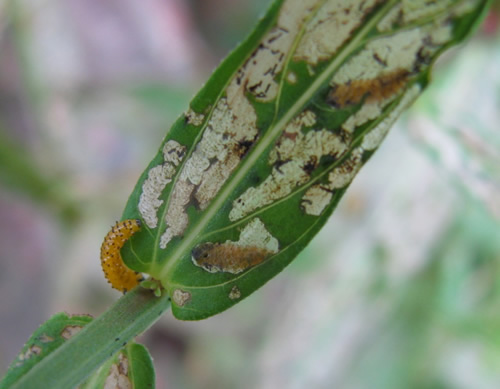

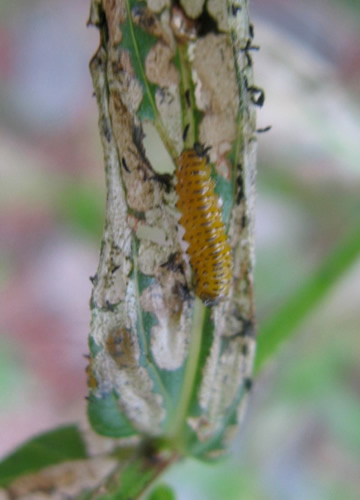
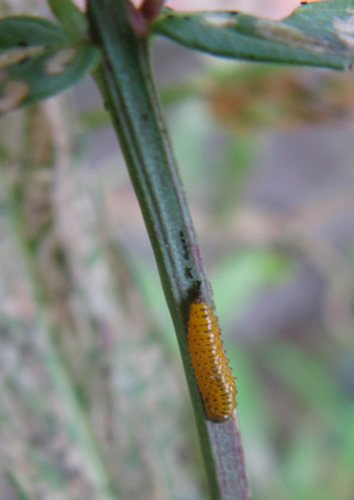
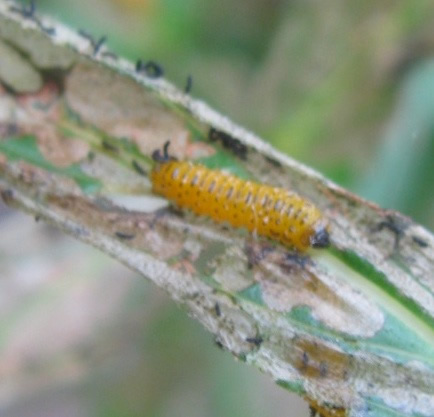
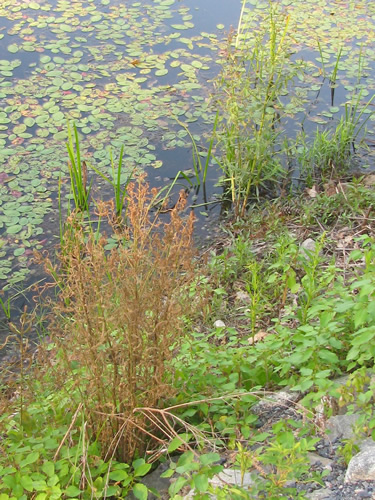
Observer: Josh Simons
Observation Date: 7/10/21
Observation Time: 12:00 p.m.
Observation Location: Moose Hill area
Common Name: Grapevine Beetle (a.k.a Spotted June Beetle)
Scientific Name: Pelidnota punctata
Comments: This is a large and beautiful beetle in the Scarab family. Its dark legs indicate this is a northern variety of this beetle.
More Information: Wikipedia
Observer: Paul Lauenstein
Observation Date: 7/4/11
Observation Time: 4:05 p.m.
Observation Location: Gavins Pond
Common Name: Japanese Beetle
Scientific Name: Popillia japonica
Comments: Japanese beetles are not very destructive in their native Japan, where they are naturally controlled by indigenous predators, but in North America it is a noted pest of about 200 species of plants including rose bushes, grapes, hops, canna, crape myrtles, birch trees, linden trees, and others.
More Information: Wikipedia
Observer: Paul Lauenstein
Observation Date: 6/19/13
Observation Time: 2:20 p.m.
Observation Location: Gavins Pond Dam
Common Name: Lady Beetle
Scientific Name: Harmonia axyridis
Comments: Multicolored Asian lady beetles come in different color patterns. Some, like this one, don’t have black spots.
More Information: Wikipedia
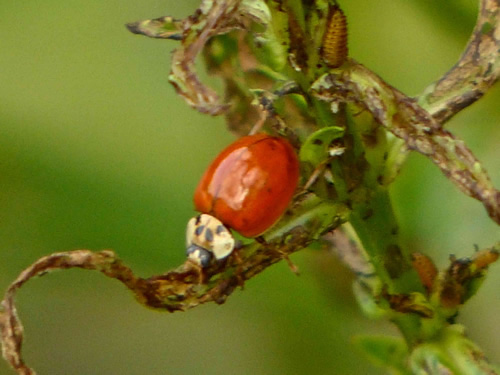
Observer: Paul Lauenstein
Observation Date: 6/4/11
Observation Time: 5:30 p.m.
Observation Location: Gavins Pond Dam
Common Name: Lady Beetle
Scientific Name: Harmonia axyridis
Comments: Lady beetles have variable coloration.
More Information: Wikipedia
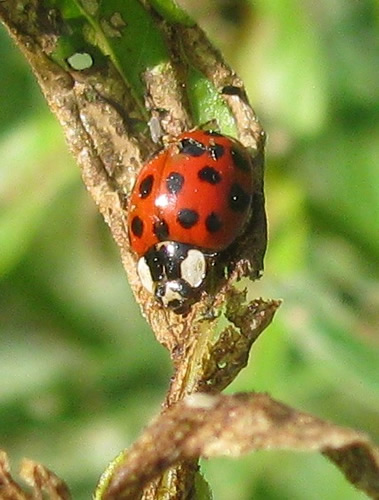
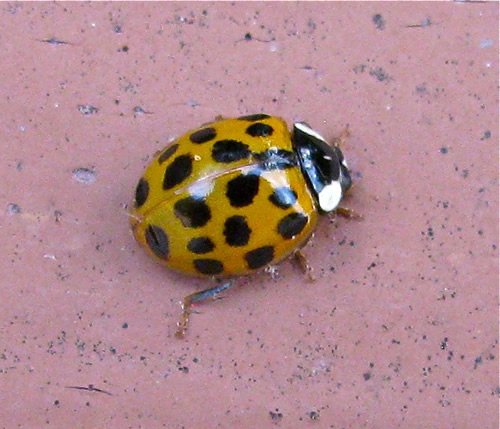
Observer: Paul Lauenstein
Observation Date: 6/5/13
Observation Time: 12:20 p.m.
Observation Location: Gavins Pond Dam
Common Name: Lady Beetle larva
Scientific Name: Harmonia axyridis
Comments: Lady beetle larvae don’t look much like the adults. Lady beetles eat aphids, so they can be beneficial for agriculture.
More Information: University of Minnesota
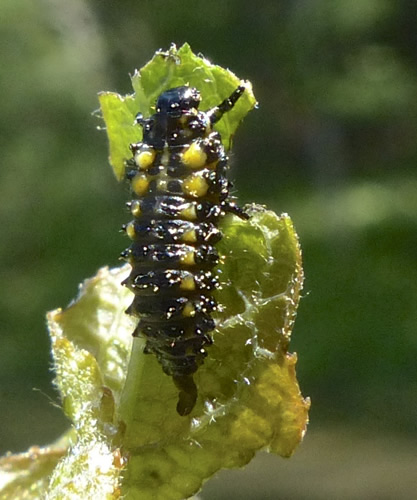
Observer: Paul Lauenstein
Observation Date: 8/31/18
Observation Time: 4:00 p.m.
Observation Location: Borderland State Park
Common Name: Locust borer beetle
Scientific Name: Megacyllene robiniae
Comments: The locust borer only attacks black locust trees. It’s a native insect and was first found in the eastern part of the United States in natural stands of black locust trees. The locust borer caused problems in colonial times by rendering the durable black locust wood unsuitable for use as fenceposts. As settlers moved west in the country, they brought black locust trees… and the borer with them. The borer is now found throughout North America.
More Information: Tumblr: Animal World
Observer: Paul Lauenstein
Observation Date: 9/30/13
Observation Time: 2:45 p.m.
Observation Location: 4 Gavins Pond Road (front yard)
Common Name: Locust borer beetle
Scientific Name: Megacyllene robiniae
Comments: I spotted this beetle near locust trees.
More Information: Tumblr: Animal World
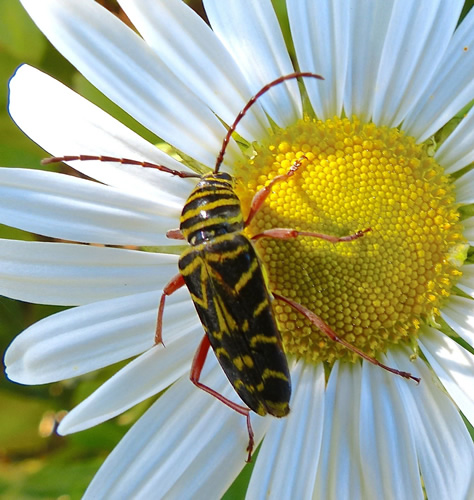
Observer: Paul Lauenstein
Observation Date: 9/10/19
Observation Time: 6:20 p.m.
Observation Location: Gavins Pond Road
Common Name: Northeastern Sawyer Beetle
Scientific Name: Monochamus notatus
Comments: The Northeastern Pine Sawyer Beetle is one of several harmless native species that look like the exotic and destructive Asian Longhorned Beetle (ALB).
The Northeastern Sawyer is our largest native longhorn beetle, about as large as ALB, but different in color and pattern: it can be distinguished from ALB by its dull grey color and lack of pattern on its wing covers (the antennae may appear banded, but they won’t be as vivid as they are on ALB). Additionally, while adult ALB will be found on living hardwood trees, the Northeastern Sawyer targets dead or dying conifers. Both adult and larval Northeastern Sawyers prefer to eat the rotting wood of conifers such as pine, spruce, and fir, versus the live, fresh hardwood required by ALB.
Adult Northeastern Sawyer Beetles are active from May through September, while Asian Longhorned Beetles are still active through the first hard frost.
Any sightings of suspicious beetle or tree damage can be reported here. Be sure to get a picture or collect the specimen.
More Information: Massachusetts Introduced Pests
Observer: Paul Lauenstein
Observation Date: 6/23/24
Observation Time: 1:20 p.m.
Observation Location: Borderland State park
Common Name: Pale Green Weevil
Scientific Name: Polydrusus impressifrons
Comments: This brilliant metallic-green broad-nosed weevil joined us at a picnic table at Borderland State Park. Weevils are a type of beetle whose mouths are adapted to sucking juices from leaves and other plant parts.
More Information: University of Minnesota
Observer: Paul Lauenstein
Observation Date: 9/29/24
Observation Time: 4:00 p.m.
Observation Location: Ward’s Berry Farm
Common Name: Pink-Spotted Lady Beetle
Scientific Name: Coleomegilla maculata
Comments: The pink-spotted lady beetle feeds on the eggs of several moths that eat corn crops, so perhaps it was no coincidence that I enountered this one near a corn field at Ward’s Berry Farm. The pink-spotted lady beetle can eat around 60 moth eggs per day and helps control the populations of these agricultural pests.
Pink-spotted lady beetles help growers avoid spraying harmful chemicals on their crops. Farmers even purchase these ladybugs commercially for this purpose.
More Information: 12 Ladybugs found in Massachusetts
Observer: Paul Lauenstein
Observation Date: 7/15/12
Observation Time: 4:50 p.m.
Observation Location: Gavins Pond Road – soccer field parking lot
Common Name: Red Milkweed Beetle
Scientific Name: Tetraopes tetrophthalmus
Comments: This striking red beetle was crawling on a milkweed leaf. Its scientific name means “four eyes” because of its black spots that look like eyes.
More Information: BugGuide
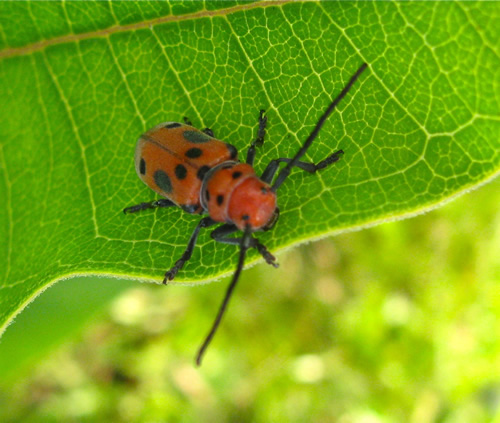
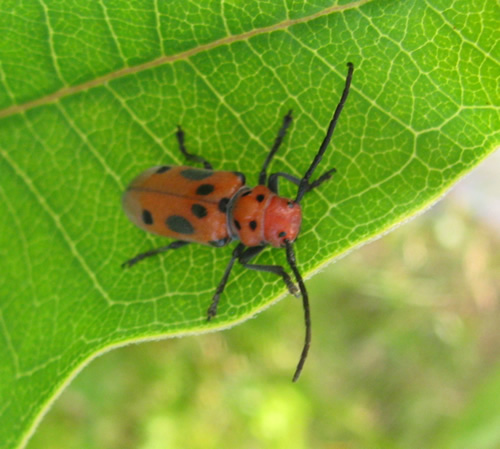
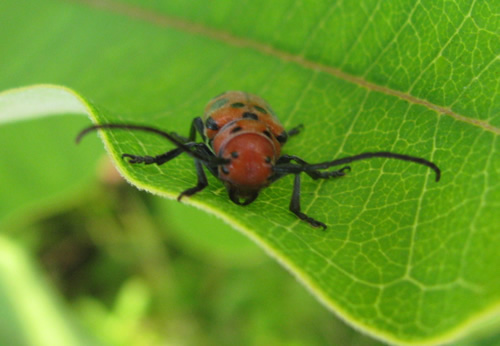
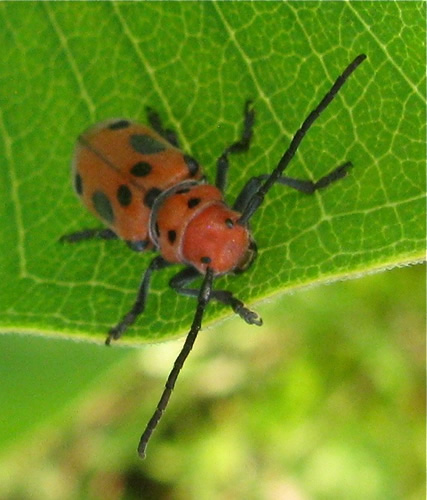
Observer: Paul Lauenstein
Observation Date: 5/30/14
Observation Time: 12:10
Observation Location: Power lines near Walpole St.
Common Name: Six-spotted tiger beetle
Scientific Name: Cicindela sexguttata
Comments: Female six-spotted tiger beetles lay eggs in sandy patches. When they hatch, the larvae burrow into the ground. The larvae lie in wait until small arthropods walk by. Then they pounce much like a jack in the box. The larvae pupate after a year. Six-spotted tiger beetles have a total lifespan of about five years.
More Information: Tiger Beetle
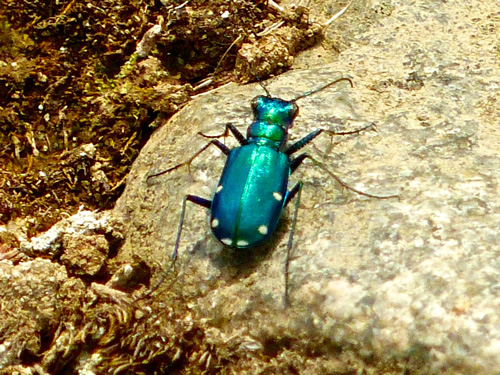
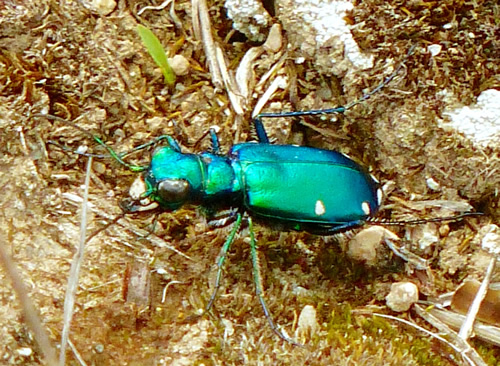
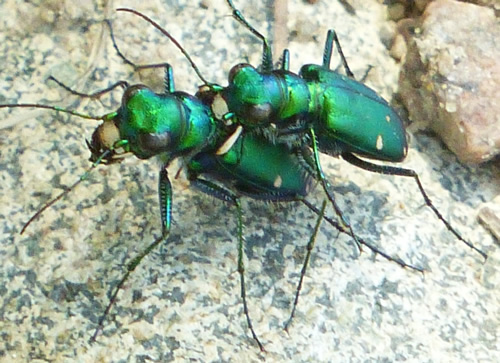
Observer: Paul Lauenstein
Observation Date: 5/8/25
Observation Time: 12:45 pm
Observation Location: Moose Hill Audubon Wildlife Sanctuary
Common Name: Six-spotted tiger beetle
Scientific Name: Cicindela sexguttata
Comments: Female six-spotted tiger beetles lay eggs in sandy patches. When they hatch, the larvae burrow into the ground. The larvae lie in wait until small arthropods walk by. Then they pounce much like a jack in the box. The larvae pupate after a year. Six-spotted tiger beetles have a total lifespan of about five years.
More Information: Tiger Beetle and The Nature Web
Observer: Paul Lauenstein
Observation Date: 6/2/19
Observation Time: 12:10
Observation Location: beneath the power lines that parallel So. Walpole St.
Common Name: Six-spotted tiger beetle
Scientific Name: Cicindela sexguttata
Comments: Female six-spotted tiger beetles lay eggs in sandy patches. When they hatch, the larvae burrow into the ground. The larvae lie in wait until small arthropods walk by. Then they pounce much like a jack in the box. The larvae pupate after a year. Six-spotted tiger beetles have a total lifespan of about five years.
More Information: Tiger Beetle
Observer: Paul Lauenstein
Observation Date: 6/22/23
Observation Time: 12:45 pm
Observation Location: Gavins Pond
Common Name: Six-spotted tiger beetle
Scientific Name: Cicindela sexguttata
Comments: Female six-spotted tiger beetles lay eggs in sandy patches. When they hatch, the larvae burrow into the ground. The larvae lie in wait until small arthropods walk by. Then they pounce much like a jack in the box. The larvae pupate after a year. Six-spotted tiger beetles have a total lifespan of about five years.
More Information: Tiger Beetle and The Nature Web
Observer: Bruce Lewis
Observation Date: 7/22/23
Observation Time: 3:00 p.m.
Observation Location: Moose Hill St.
Common Name: Tomentose Burying Beetle
Scientific Name: Nicrophorus tomentosus
Comments: I observed this beetle consuming a dead animal on Moose Hill St.
The beetle belongs to the family Silphidae, which are carrion beetles. The beetles have sensitive antennae that contain olfactory organs. Thus, the beetle can locate dead animals and then as the name suggests, can bury them. However, unlike other burying beetles, N. tomentosus does not completely bury these brood carcasses. They instead dig a shallow hole under the carcass and cover it with leaf litter. Recognition of these beetles can be distinguished by its black color with orange markings on the wing covers (elytra).
More Information: Wikipedia
Observer: Gaurav Shah
Observation Date: 4/4/21
Observation Time: 2:00 p.m.
Observation Location: Moose Hill Audubon Wildlife Sanctuary
Common Name: Water Beetle
Scientific Name: tribe Hyphydrini, subfamily Hydroporinae, family Dytiscidae
Comments: This is the first BugGuide.net report of this tribe and genus in Massachusetts.
More information: BugGuide.net and Wikipedia
Observer: Paul Lauenstein
Observation Date: 6/25/11
Observation Time: 3:20 p.m.
Observation Location: Gavins Pond Dam
Common Name: Willow Leaf Beetle
Scientific Name: Plagiodera versicolora
Comments: I got help identifying this tiny beetle at www.bugguide.net. I set up a free account and uploaded my photo. In a few days I received an email from one of their entomologists with the identification. Given that there are thousands of species of insects, bugguide.net is a valuable resource for identification.
More Information: BugWood
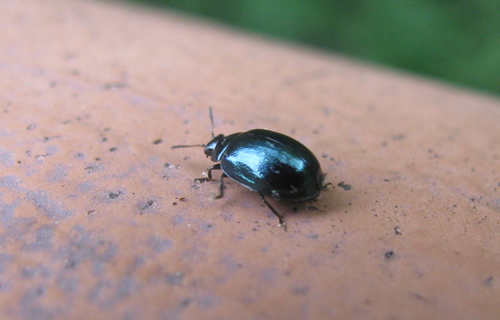
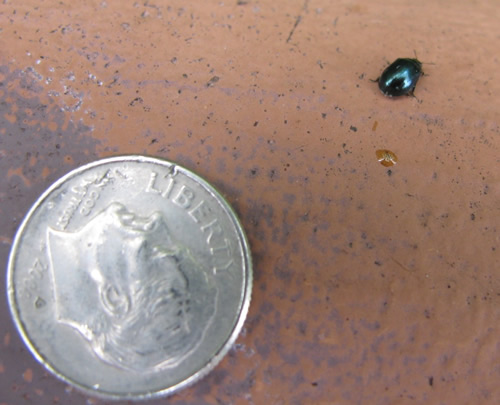


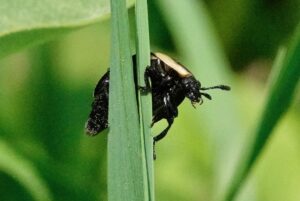

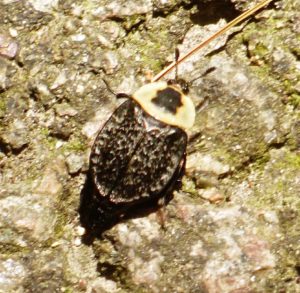
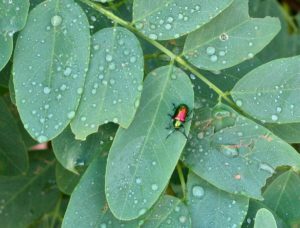
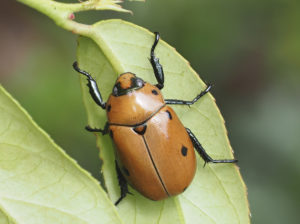 12
12